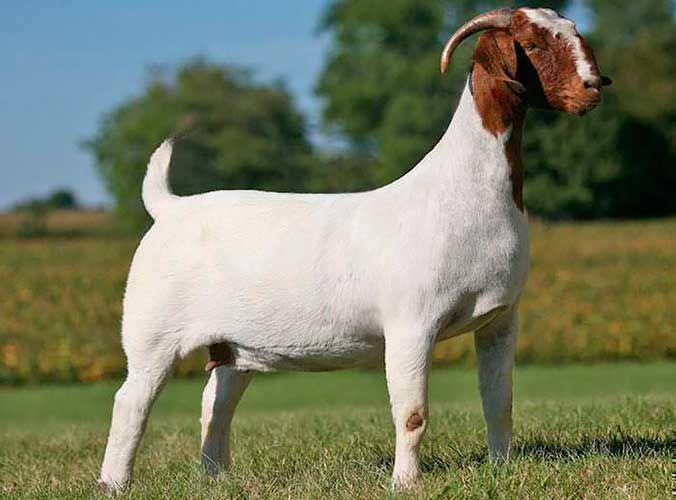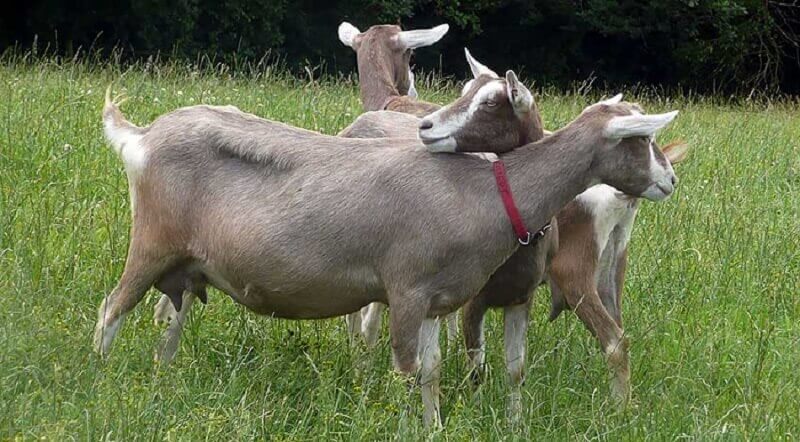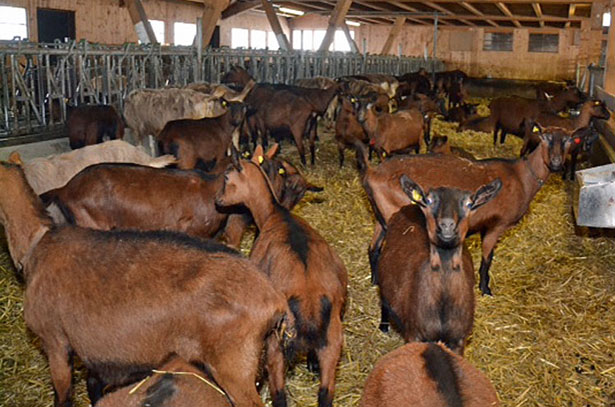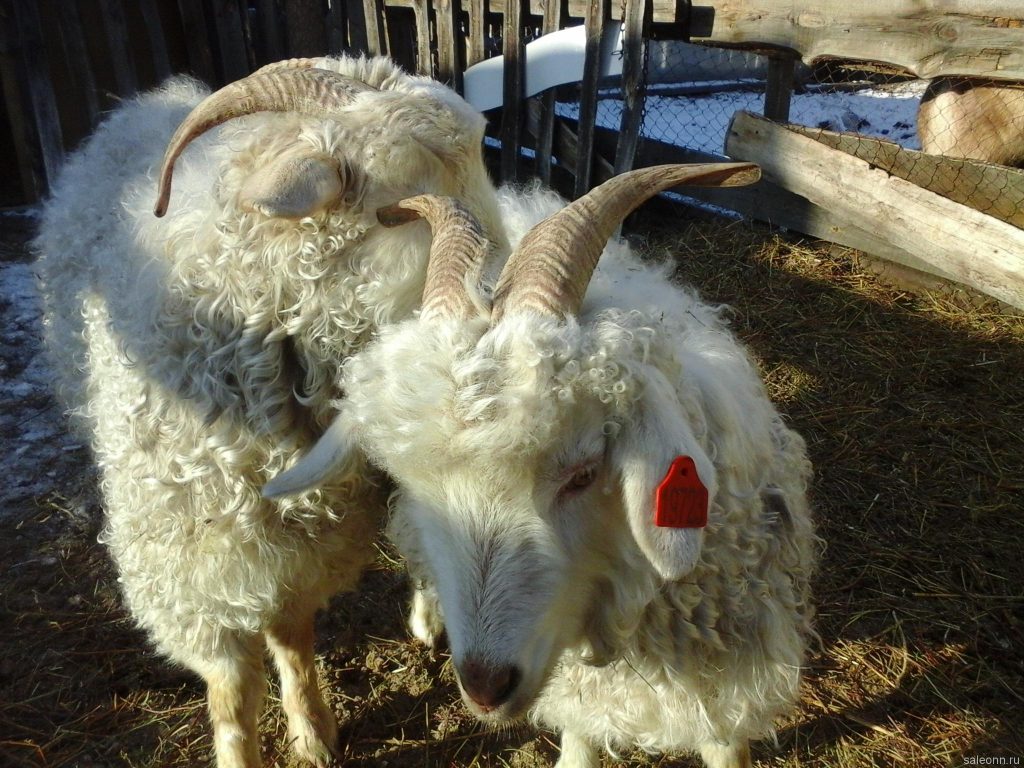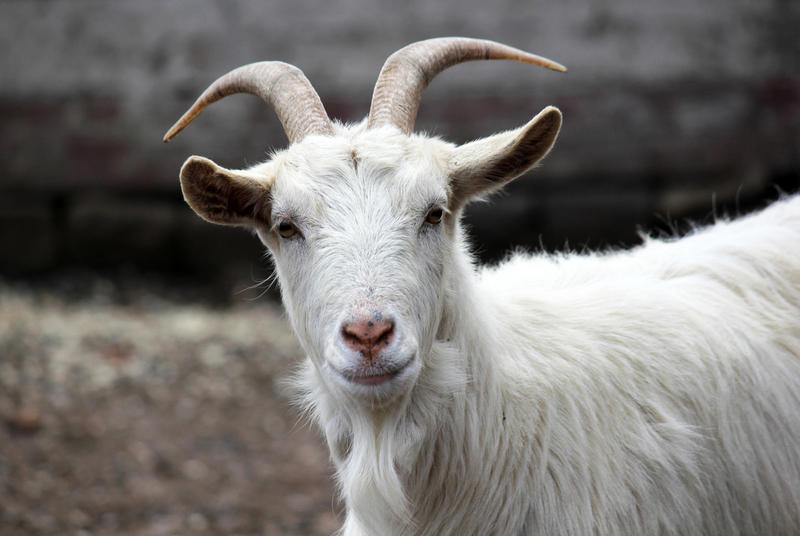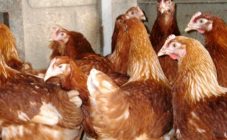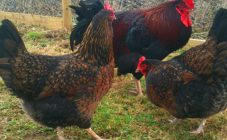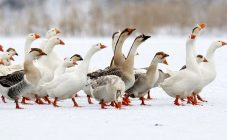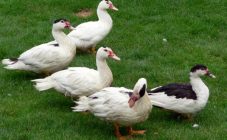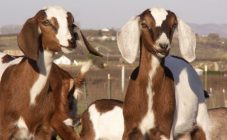Content:
The goat is one of the first animals to be domesticated by man. According to researchers, this happened about 9000 years ago. Since then, breeders have been working on breeding and improving all new breeds of these animals. In different parts of the world, farmers prefer different types depending on the climate and the purpose of breeding. Russian farmers, for example, prefer the following breeds: Zaanenskaya, Gorkovskaya, Toggenburgskaya, Russian White.
Depending on what the breeder wants to get in the end, goats are divided into several types:
- woolen;
- downy;
- milk-woolen;
- dairy.
In Russia, dairy breeds are in the greatest demand, since they are the most hardy, and milk, despite its high fat content, is easily absorbed even in the body of one-year-old babies. In second place in popularity are goat breeds due to the nutritional properties of the tenderloin and the high demand for meat in stores.
Meat direction
The most common beef breeds are:
Boer goat
It was bred in the twentieth century by mixing Indian, South African and European individuals. Today, of all meat breeds, it is the most widespread in the world.
The suit is distinguished by some originality: the head, neck, legs and tail are usually light brown, while the body is white. But animals can also be black and fawn.
The torso itself is muscular and large. Males can weigh up to 150 kg, females up to 100 kg. If the care of the goats is correct, they can lamb in three kids, each weighing about 4 kg, the daily growth can be up to 0.5 kg.
The meat of this breed is of a delicate consistency and is recommended by doctors as dietary. Goats have high endurance and adaptability to adverse living conditions.
Greek local
Since this breed does not have a specific characteristic color, they can be of a wide variety of colors: from gray to black. Moreover, it is the black goat that looks more impressive. Unlike Boers, this breed weighs much less - adults reach only 65 kg, but their meat is unusually delicate in texture with a pleasant taste without an unpleasant odor.
Despite the large udder, you should not expect a lot of milk from them, since they can only give up to 100 liters per year. Greek breeds are hardy, easily adaptable to the climatic zones where they are kept, and disease resistant. It is not difficult to breed them, since they can graze even in mountainous areas.
TOoki
The color of these goats can be white, black and brown. The body, like all meat breeds, is fleshy and muscular, the legs are long and strong. The horns are large, in males they are twisted back, in females - straight, small in size. The weight of animals is small, about 60 kg, although males can reach up to 90 kg. Meat is prized for its high nutrient content. One should not expect large milk yield from them either, but the female has enough to feed two kids.This breed is resistant to frost, drought and hot temperatures, and is also unpretentious in keeping.
Dairy direction
This is the most common group. They are kept both in large farms and in backyards.
The most common dairy breeds are:
- Zanenskaya;
- Gorkovskaya;
- goat La Mancha;
- Murcia Grana;
- Nubian;
- Shami the goat;
- Russian white;
- Toggenburg;
- French alpine;
- Czech.
The following varieties are most popular in Russia.
Zaanenskaya
The most popular breed not only in Russia, but also in the world, for the most part due to easily digestible milk and large volumes of milk yield. Was bred in Switzerland. On average, goats can produce 600-1200 liters of milk per year with a high fat content of up to 4.5%. Another advantage is their high adaptability to the climatic conditions in which they are kept. Animals are unpretentious, have high fertility. In order to increase milk yield, farmers raise Saanen goats by mixing them with other dairy breeds.
Gorkovskaya
The breed was bred from Russian white goats by crossing with Zaanenskaya to increase milk yield. The color is white, sometimes the head can be brown. Animals weigh a little about 50 kg on average, but keep them due to the high productivity of milk yield. During the lactation period (about 10 months), you can get from 500 to 1000 liters of milk, while its fat content is about 5%. Good quality cheese is produced from milk. As a rule, 2 kids are born during lambing, but cases of birth and 4 healthy babies have been recorded.
Toggenburg goat
Unlike their dairy relatives, these animals have miniature external characteristics, a straight back, large fleshy ears, a developed udder, and a long neck with a small head. The hornless goat (these breeds have no horns) is unusually fertile: it can lamb up to 3 times in 2 years. Productivity is high - up to 1000-1200 kg of milk per year. Due to its nutrients, cheese of the elite quality is made from the milk of the Toggenburg breed. Adults weigh a little - up to 60 kg. Their coat is smooth and shiny.
Russian white
These white cloven-hoofed animals are most common in Russian villages. The lactation period usually lasts 7-8 months, during which time you can get up to 500 liters of milk with a fat content of up to 5%.
The body is barrel-shaped, squat. Animals have a wide sternum, small ears and large sickle-shaped horns. The coat is usually long, but there are also short-haired individuals. One lambing can bring 1-2 cubs. Adults reach a small weight (35-50 kg). Animals have extraordinary endurance and unpretentious maintenance.
Czech goat breed
The Czech goat is especially productive. On average, with proper care, these goats become real champions in milk yield - up to 2300 kg of milk with a relatively low fat content of up to 3.5%. They are graceful animals with a graceful posture. The color is brown, red. There are both horned and hornless individuals. Goats outwardly resemble a dog and have the same docile and affectionate character - they are ready to follow their owner everywhere. For one litter, 1-2 goats are brought. Males weigh on average 75-80 kg with an increase of up to 85 cm, females are 10 cm shorter with an average weight of 55 kg.
La Mancha
Artiodactyls originate from the province of La Mancha (Spain). The color is varied: white, black, brown, the coat is short, shiny. Their height does not exceed 76 cm, weight is on average up to 70 kg, but there are males weighing up to 100 kg. They are distinguished by high productivity, with good care, the uterus can give up to 9 liters of milk per day with a fat content of up to 4%.Productivity is high - up to 5 babies can be obtained in one litter, mainly goats are born. They are resistant to any conditions of detention, they like oak and birch wreaths in the diet.
Shami
The most common in Syria, because of this, they also have the names Aleppo and Baladi.
These are long-eared breeds, the ears of which are in a hanging position and reach up to 32 cm in length. Goats grow up to 103 cm with an average weight of 70-130 kg, females - 85 cm with a weight of 60-90 kg. During a lactation period of 240 to 305 days, the uterus can give from 650 to 1100 liters of milk with a fat content of up to 4.5%. On average, females bring 2 kids.
Wool breeds
Artiodactyls of this type are kept for their wool, which is used to make fabrics, carpets and yarns. High quality leather is made from skins for various products. ATof this, there are about 300 types of wool breeds, divided into three types:
- downy;
- coarse-haired;
- woolen.
The most popular types of wool breeds are further.
Angora
It is the oldest goat breed, supposedly originating from Central Anatolia (Turkey). The weight of adult males reaches 50 kg with a height of 75 cm. The goats weigh less - up to 35 kg, the average height is 66 cm. The goats have luxurious horns, while the females flaunt with small horns.
Angora have a loose body constitution and a thin neck, short legs. The most common color is white, but there are silver, black, brown and gray colors. The length of the wool is in the range of 20-25 cm and is distinguished by a luster, called a "chandelier", which tends to glow in the dark. Haircuts are done 2 times a year. On average, you can cut up to 6 kg from goats, and 3.5 kg from goats.
They are distinguished by resistance to weather conditions, be it cold or heat, and unpretentiousness in the diet.
Soviet wool
Bred by crossing the Rough-wool and Angora breeds in 1952. These goats have a strong skeleton and medium-sized horns. Small animals, skinny constitution with overgrown long hair. The structure of the fleece of this breed resembles the Angora, but somewhat shorter, thinner and thicker. In terms of height and weight, they are between the Angorks and Coarse-haired, yielding to the latter and surpassing the former.
Tajik (Uzbek)
It belongs to the coarse-haired species, bred by breeders in 1963 in the Tajik Soviet Republic. They are large animals with long legs. Males weigh up to 140 kg, females are slightly less - on average up to 70 kg, sometimes they can weigh up to 120 kg. The fleece is slightly wavy, elastic and elastic, up to 20 cm long. Up to 4 kg of wool is cut from the goats, up to 3 kg from the queens. Fertility is small, usually 1 kid is born.
Tuvinskaya
This variety is obtained by crossing Angora, local Tuvan breeds and Soviet wool breeds. Fleece is strong, pigtails are from 17 to 22 cm long. Fleshiness and milkiness are low. The weight of goats reaches 60 kg, the uterus weighs an average of 38 kg. Animals perfectly adapt to living conditions.
Description of decorative and dwarf goats
Goats are bred not only for household needs. There are also decorative purebred species that are kept as pets. The dwarf goat is a small breed artiodactyl. There are two types: Cameroon and Nigerian.
Both breeds of this small goat share common characteristics. Their colors have white, brown and black spots. Small goats (Cameroon reach up to 70 cm with a weight of 30 kg, Nigerian a little less).The temperament of each individual is different, but all of them are united by extraordinary friendliness and affection for the owner, although they have a habit of being capricious sometimes. Babies should be taught to new conditions from early childhood - this is how adaptation occurs faster and easier. These goats can hardly be called calm animals due to the fact that they can often show their discontent by bleating loudly.
To keep the dwarfs, a variety of devices, hills and toys are required. However, pets may soon get bored with playing with the same things, so the owner needs to be smart in order to diversify their leisure time.
That's all! Whatever breed of goats the breeder chooses, first he needs to equip a place for keeping animals, be it a barn or a separate room, if the choice fell on a decorative look. In second place is the calculation of the diet. Considering all these points, you can go shopping for an artiodactyl.
